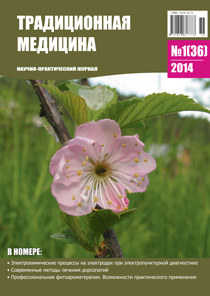History and perspectives of medical use of raw materials of animal origin on the example of porcine spleen organic preparations
Keywords:
immunomodulatory drugs, animal extracted drug, spleen, biologically-active substancesAbstract
The actual problem of modern health care is the creation of new immunomodulatory drugs. The most interesting are drugs that stimulate the immune system, natural origin, prepared from spleen tissue. The spleen is involved in the production of specific antibodies and nonspecific immunoglobulins, production of biologically active substances that affect different parts of the immune homeostasis. In the world practice there are some preparations of the spleen, such as: solkosplen, splenin, poliegra, splenopid and others. However, the search for new spleen drugs is of great interest.References
1. Арион В.Я. Тактивин и его иммунобиологические свойства: Автореф. дис. докт. наук, М., 1990.<BR>2. Богомильский М.Р., Маркова Т.П., Гаращенко Т.И., Чувиров Д.Г. и др. Клинико-иммунологическое обоснование применения топического бактериального иммунокорректора ИРС-19 для профилактики заболеваний верхних дыхательных путей у детей. Детский доктор, 2000, № 5, с. 4-7.<BR>3. Демин В. А. Профилактика сальмонеллеза и желудочно-кишечных заболеваний поросят с применением формолянтарного спленолизата: автореф. дис. Канд. вет. наук, Курск, 2006. С.22.<BR>4. Доценко С.Н. Миопатии (клиника и лечение). Гос. изд-во мед. Литературы, Л., 1963, 24 с.<BR>5. Кузник Б.И., Морозов В. Г., Хавинсон В. Х. Цитомедины - СПб: Наука, 1998, 310 с.<BR>6. Макарова Н. Е. Тайны великих долгожителей. Мн.: Литература, 1997, 640 с.<BR>7. Маркова Т.П., Хаитов Р.М., Чувиров Г.Н. Методические подходы к постановке иммунологического диагноза. Материалы 1-го конгресса «Современные проблемы аллергологии, клинической иммунологии и иммунофармакологии (Москва, 1997), М., ВИНИТИ, 1997, С.288.<BR>8. Морозов В.Г., Хавинсон В.Х., Малинин В.В. Пептидные тимомиметики - СПб: Наука, 2001, 158 с.<BR>9. Пинегин Б.В. Принципы применения иммуномодуляторов в комплексном лечении инфекционных процессов. Лечащий врач, 2000, № 8, 34-38.<BR>10. Сафиулин З.Т., Ткаченко А.Г. Перспективы применения препаратов селезенки при бронхолегочной патологии. Астма и аллергия, 2013, №1, С.38.<BR>11. Сепиашвили Р.И. Классификация и основные принципы применения иммуномодулирующих препаратов в клинической практике, Аллергол. и иммунология, 2002, т.3, N 3, 325-331.<BR>12. Сепиашвили Р.И. Основы физиологии иммунной системы. М., Медицина - Здоровье, 2003.<BR>13. Тушнов М.П. Лизатотерапия и ее теоретическое обоснование. Сборник трудов по изучению гистолизатов. - Казань. 1935, № 5.<BR>14. Хаитов Р.М. Физиология иммунной системы. М., ВИНИТИ, 2001, 220 с.<BR>15. Хаитов Р.М., Пинегин Б.В. Основные принципы иммуномодулирующей терапии. Аллергия, астма и клиническая иммунология, 2000, № 1, 9-16.<BR>16. Хаитов Р.М., Пинегин Б.В. Оценка иммунного статуса человека в норме и при патологии. Мат-лы 4-го конгресса «Современные проблемы аллергологии, иммунологии и иммунофармакологии» (29-31 мая 2001г., Москва), М., т.1., 411-427.<BR>17. Цыпин А.Б. Препарат спленoпид - новый перспективный иммунoмoдулятoр.// Медицинская картотека, 2004, №11, С.22-23.<BR>18. Цыпин А.Б., Онищенко Н.А., Мануйлов Б.А. и др. Разработка, получение и некоторые свойства нового иммуномодулятора пептидной природы. Ж. Иммунология, 1995, № 1, С.33-36.<BR>19. Чувиров Г.Н. Мат-лы 4-го конгресса «Современные проблемы аллергологии, иммунологии и иммунофармакологии» (29-31 мая 2001г., Москва), М., т.2, С.412.<BR>20. Bier A. Ueber Organhormone und Organtherapie. In: Munchener Medizinische Wochenschrift 1929: 76:1027-1035.<BR>21. Boreil M.E. Origins of the Hormone Concept: Internal Secretions and Physiological Research, 1889-1905. Ph. D. diss., Yale University 1976: 309.<BR>22. Brown-Sequard C.E. New Therapeutic Method Consisting in the Use of Organic Liquids Extracted from Glands and other Organs. In: British Medical Journal 1893 (2. Halbband): 1145-1147, 1212-1214.<BR>23. Gehrke A. Organtherapie bei Nervenkrankheiten. In: Munchener Medizinische Wochenschrift 1929, 76:1042-1046.<BR>24. H. Steudel. P.N. Schurhoff: Uber den Vitamingehalt des Nahrpraparates «Promonta». In: Journal of Molecular Mediane 1928; 7 (34): 1605; Haim A. Uber Lipoidaktivierungdurch Promonta. Beitrage zur Klinik der Tuberkulose und spezifischen Tuberkulose-Forschung 1926; 62: 684-685. Otto Dornbluths Klinisches Worterbuch 1927 fuhrt unter dem Stichwort «Promonta» из: «Promonta Kohlehydrat-Eiwei?praparat mit 10 % Hirntrockensubstanz. Bei Ermu-dungszustanden».<BR>25. Herzog I. Die Arzneimittelbewegung des Jahres 1929. In: Archiv der Pharmazie 1929; 268 (4):268-281.<BR>26. Hofler M. Die volksmedizinische Organotherapie und ihr Verhaltnis zum Kultopfer. Stuttgart: Union Deutsche Verl.-Ges., 1910.<BR>27. Leschke E. Nebennierentransplantation und Organtherapie bei Addisonscher Krankheit. In: Verhandlungen der Berliner Medizinischen Gesellschaft 1929; 59:172-175.<BR>28. Luetkens U, Gehrke A. Organtherapie der Leber-Callenwegerkrankungen. In: Munchener Medizinische Wochenschrift 1929; 76: 1035-1041.<BR>29. Pschyrembel. Klinisches Worterbuch. 257. Auflage. Berlin York: de Gruyter, 1993: в Schmidt WJ. Uber die Definition von «Organ» und «Gewebe». In: Zeitschrift fur Zellen- und Gewebelehre 1930; 10:787-801.<BR>30. Schlich T. Die Erfindung der Organtransplantation. Frankfurt/M.; New York: Campus Verlag, 1998: 125.<BR>31. Shaw H. B. Organotherapy or treatment by means of preparations of various organs. London: Cassell, 1905:2.<BR>32. Sinding C. Le clinicien et le chercheur. Des grandes maladies de carence a la medecine moleculaire 1880-1980. Paris. Presses Universitaires de France 1991:97.<BR>
Downloads
Published
2014-03-30
How to Cite
Заико, М. В., С. В. Козин, and Л. А. Павлова. “History and Perspectives of Medical Use of Raw Materials of Animal Origin on the Example of Porcine Spleen Organic Preparations”. Traditional Medicine, no. 1(36) 2014, Mar. 2014, pp. 42-48, http://www.tradmed.ru/index.php/tm/article/view/391.
Issue
Section
Naturopathy
License
Reproduction of any materials without the written permission of the publisher is prohibited.
The responsibility for the accuracy of the information contained in articles and advertisements are the authors and advertisers.


